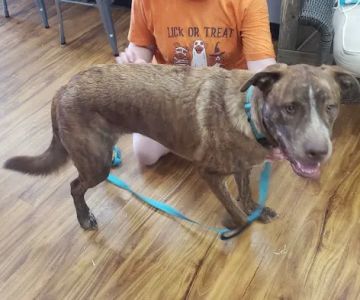Understanding Your Dog’s Anxiety During Vet Visits
Taking your dog to the vet is a necessary part of pet care, but it can be a stressful experience for both you and your pet. Many dogs experience anxiety during vet visits, whether it's due to unfamiliar surroundings, past experiences, or the sounds and smells of the clinic. As a pet owner, it’s important to understand why your dog may feel anxious and how you can help ease their nerves before and during the appointment.
1. Familiarize Your Dog with the Vet’s Office
One of the best ways to reduce your dog’s anxiety is to make the vet’s office a less intimidating place. Before your dog’s first official appointment, consider visiting the clinic for a casual walk-through. This allows your dog to become familiar with the environment without the stress of a medical procedure. You can even schedule a meet-and-greet with the vet or staff, so your dog has a chance to interact with them in a calm, non-threatening manner. This simple step can help make future visits feel less overwhelming.
2. Bring Your Dog’s Favorite Comfort Items
Just like humans, dogs find comfort in familiar items. Bringing along your dog’s favorite blanket, toy, or a piece of clothing with your scent can provide a sense of security. These items can help ground your dog in a situation that might otherwise feel foreign or scary. The presence of a familiar object can have a calming effect, making your dog feel more at ease during the visit.
3. Use Positive Reinforcement Before and After the Visit
Positive reinforcement is key to changing your dog’s association with vet visits. Start using treats and praise as soon as you arrive at the clinic and continue throughout the visit. Giving your dog treats after their appointment can help them associate the experience with something positive. This creates a mental association between the vet and rewards, which can significantly reduce anxiety in future visits.
4. Consider Natural Calming Aids
There are several natural calming aids available for dogs that can help alleviate anxiety before and during the vet visit. Products such as calming collars, sprays, or pheromone diffusers are designed to help soothe your dog’s nerves. Some dogs may also benefit from calming treats or supplements containing ingredients like chamomile, valerian root, or CBD. Always consult your veterinarian before using any calming products to ensure they’re safe for your pet.
5. Keep Your Dog Active Before the Appointment
A well-exercised dog is often a calmer dog. Before your vet appointment, take your dog for a long walk or engage in a play session to help burn off excess energy. A tired dog is less likely to feel restless or anxious, which can make them more receptive to the calming environment of the vet’s office. Just be sure to leave enough time for your dog to rest before the appointment so they’re not too exhausted to cooperate with the visit.
6. Stay Calm and Positive
Dogs are highly sensitive to their owner’s emotions, and they can pick up on your stress or anxiety. If you feel nervous or worried about the vet visit, your dog will likely feel the same. It’s important to stay calm, speak in a soothing voice, and maintain a positive attitude. Your dog will look to you for cues on how to react, and by staying relaxed, you can help them feel more secure.
7. Work with Your Veterinarian
If your dog’s anxiety is severe, don’t hesitate to talk to your veterinarian about your concerns. Many vets are experienced in handling anxious pets and can offer advice or even suggest behavioral therapy, training, or medication if necessary. Your vet may also have recommendations for specific tools or strategies that can make vet visits easier for your dog. Working together, you can create a plan to reduce your dog’s anxiety in the long term.
Conclusion: Creating a Stress-Free Vet Experience for Your Dog
Vet visits don’t have to be a stressful event for your dog. With a little preparation and understanding, you can help reduce your dog’s anxiety and create a more positive experience for them. By familiarizing your dog with the vet’s office, using positive reinforcement, and incorporating calming aids, you can make these visits easier for both of you. Don’t forget to stay calm and seek professional help if your dog’s anxiety persists. Over time, your dog will learn to associate the vet with care, comfort, and positive experiences.











